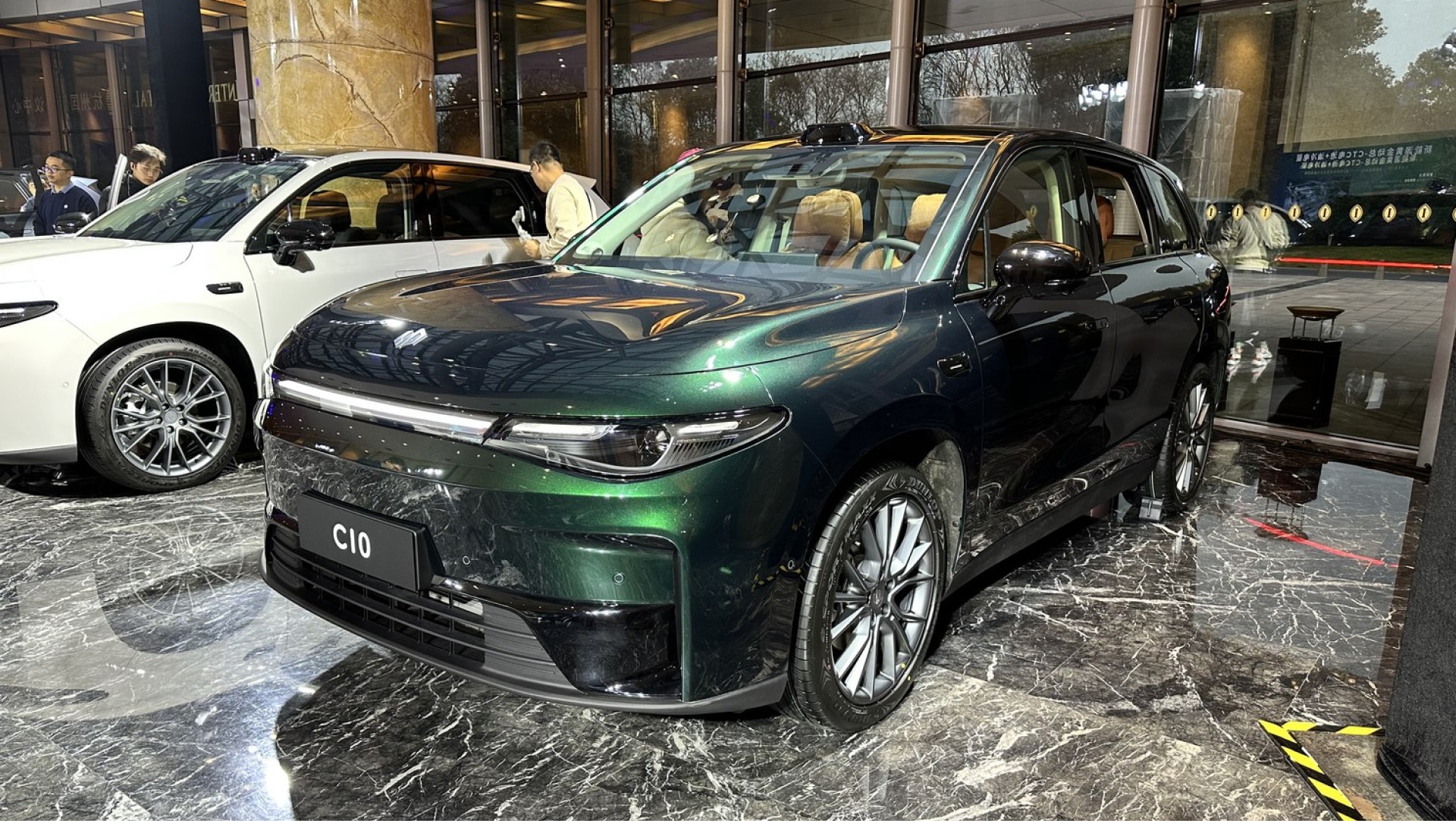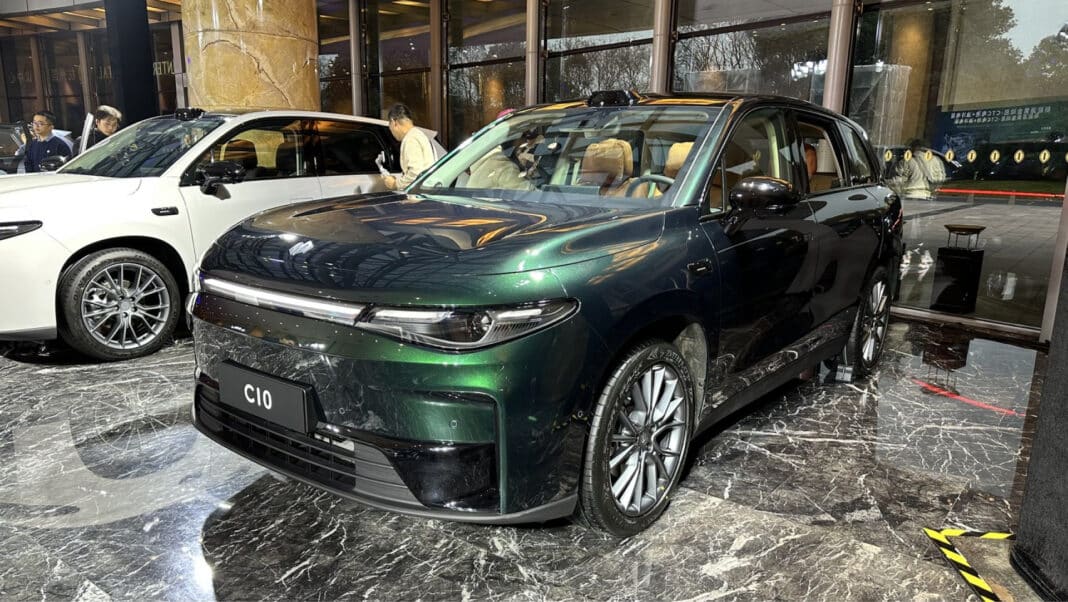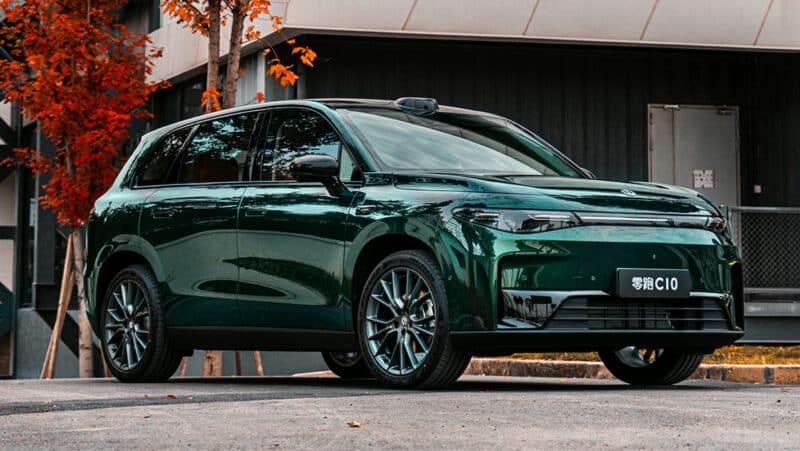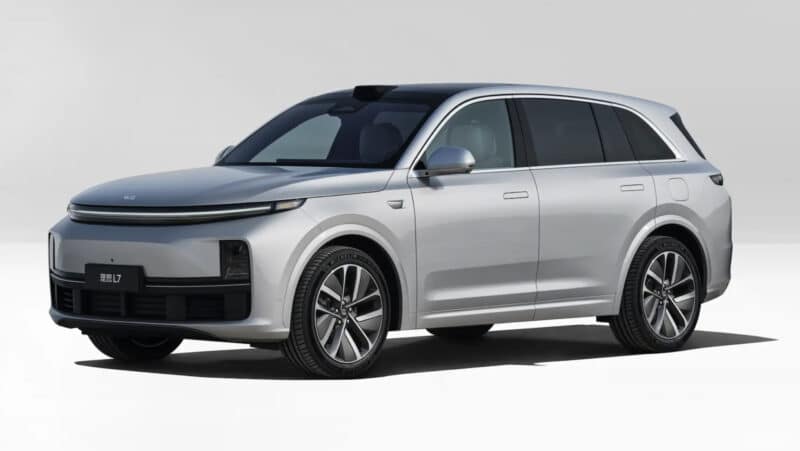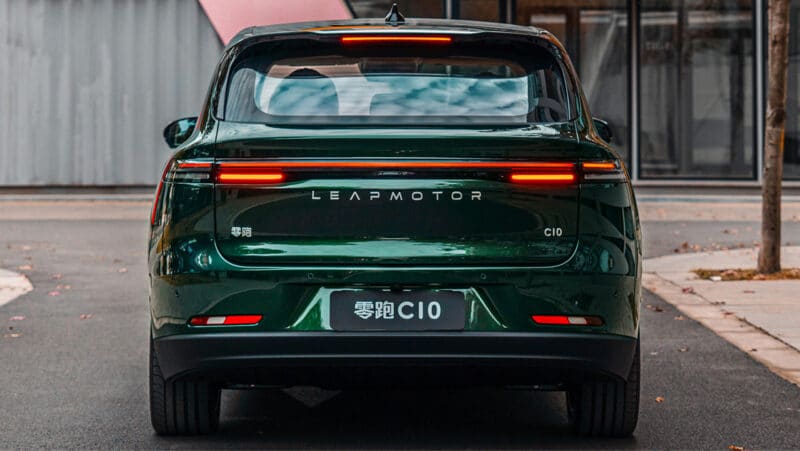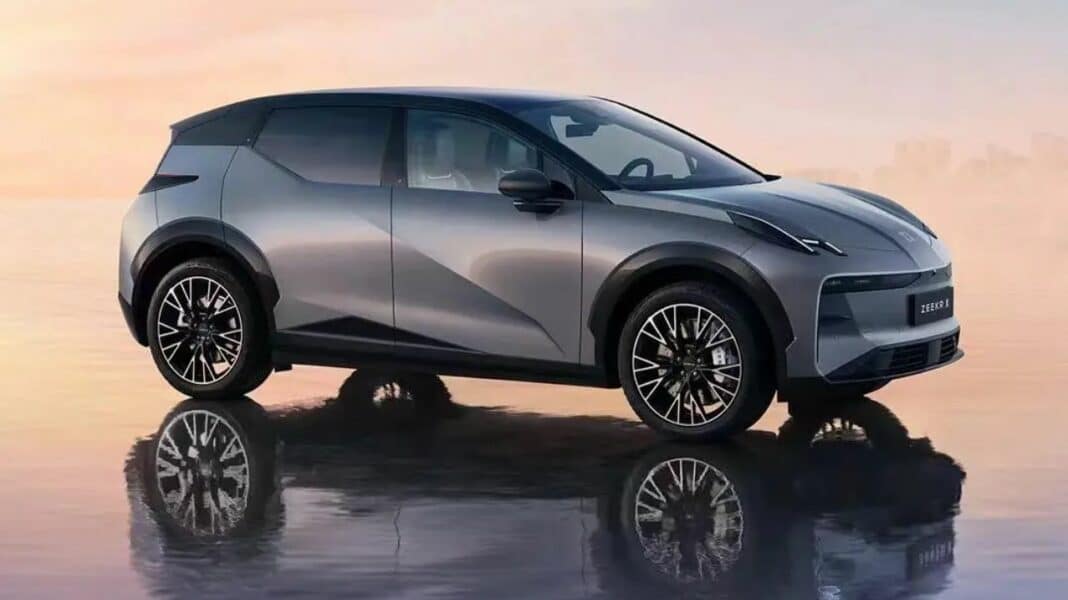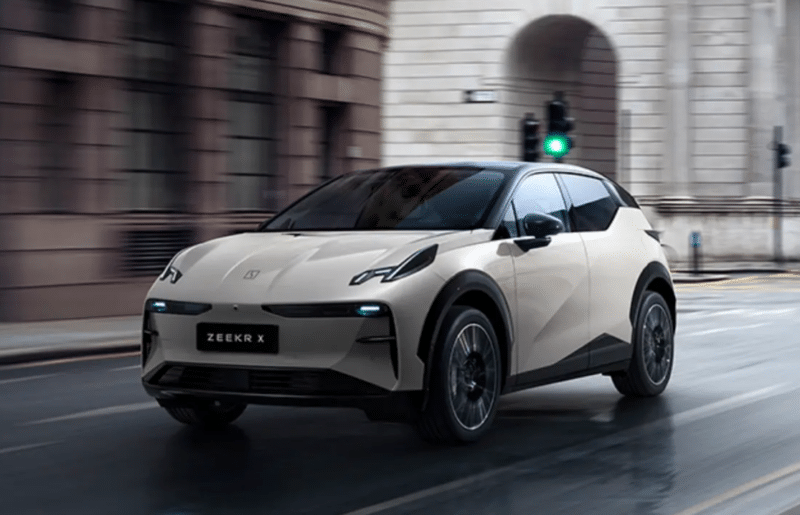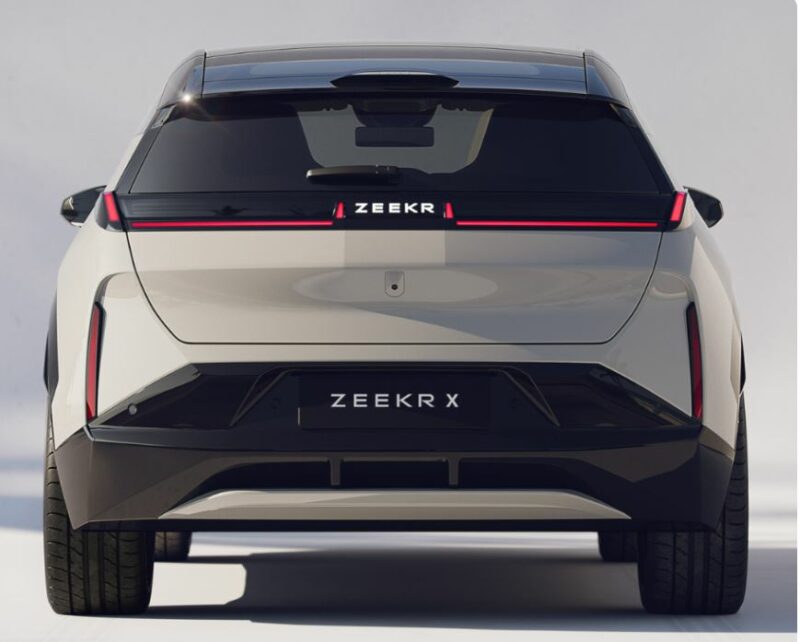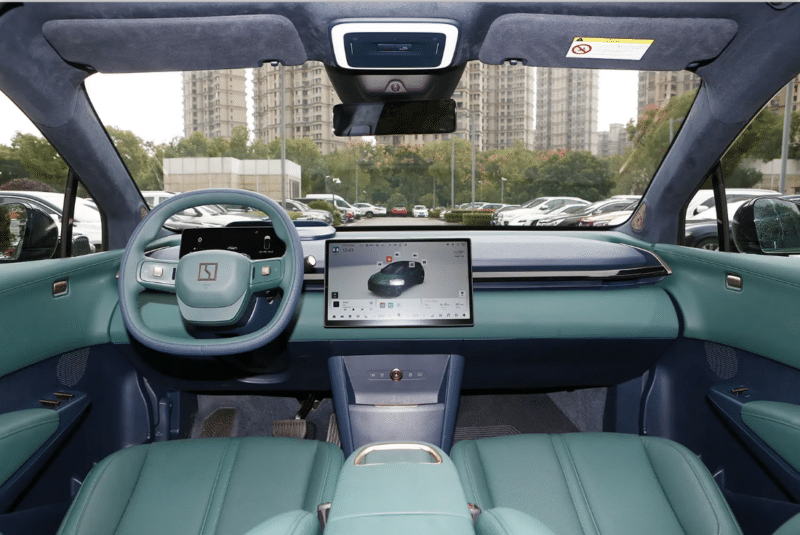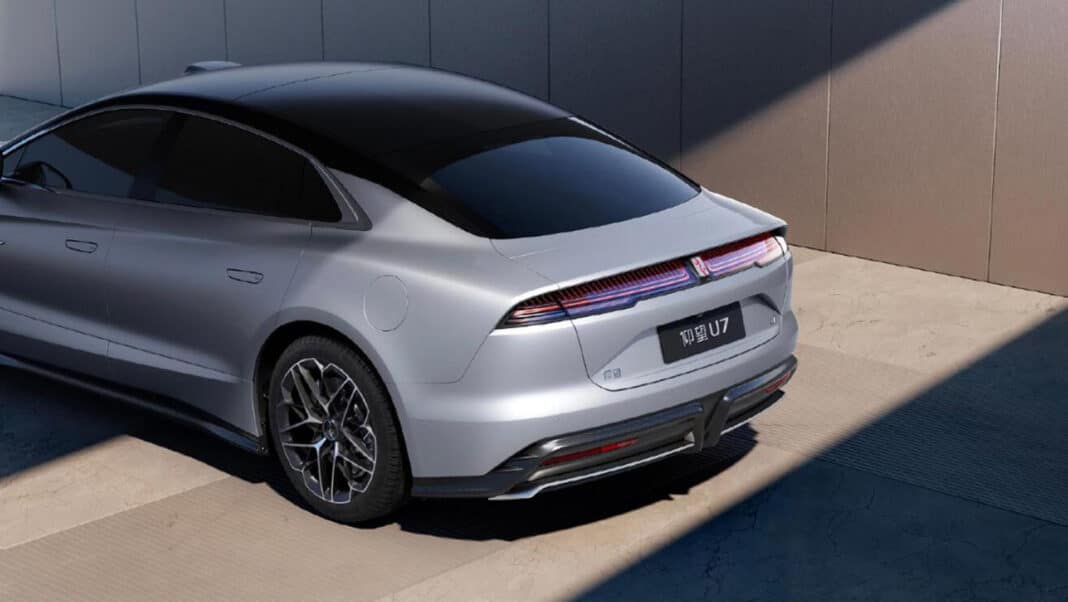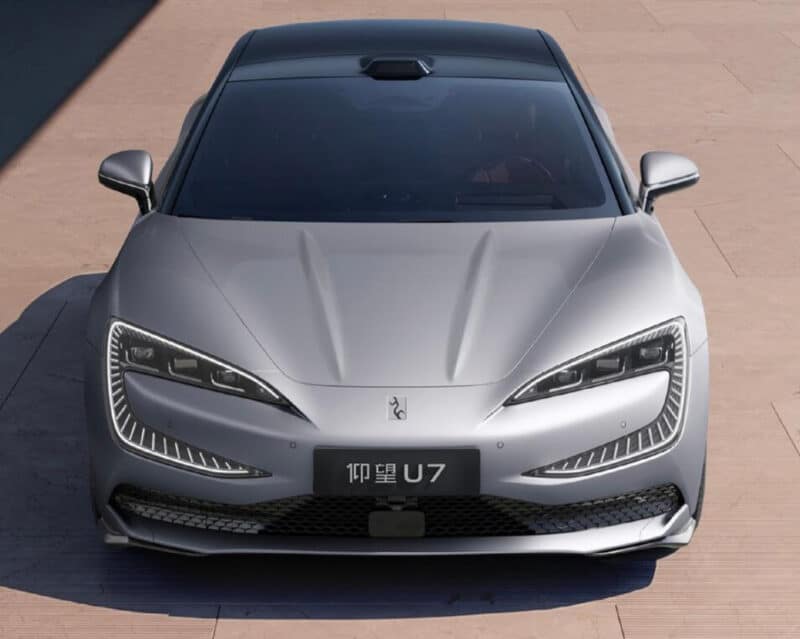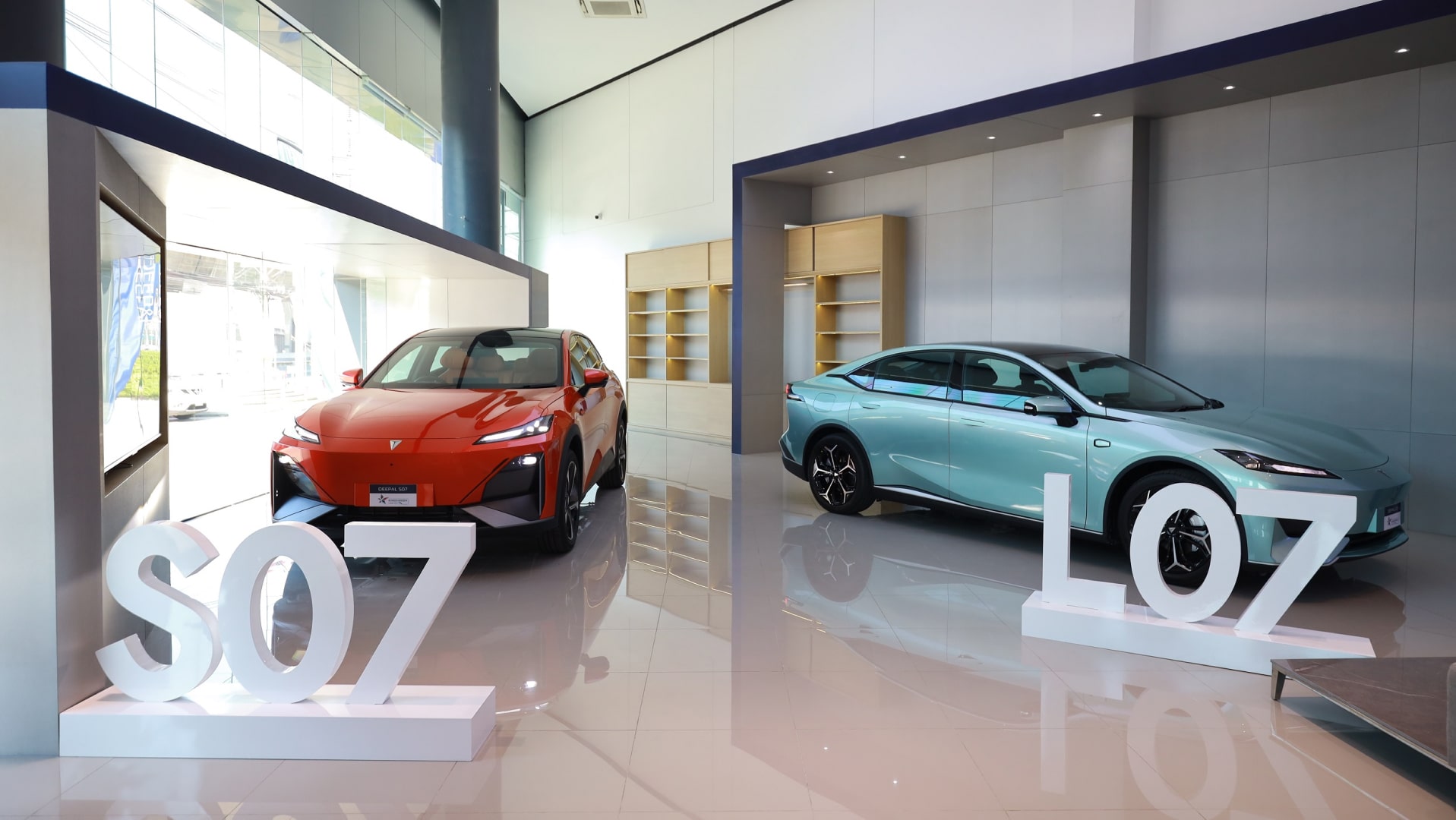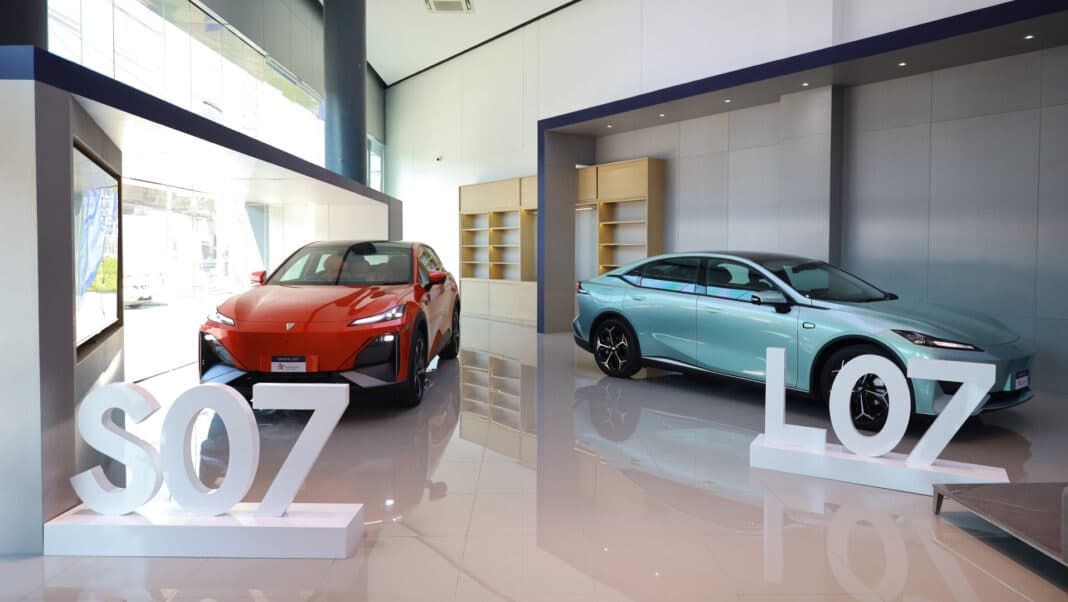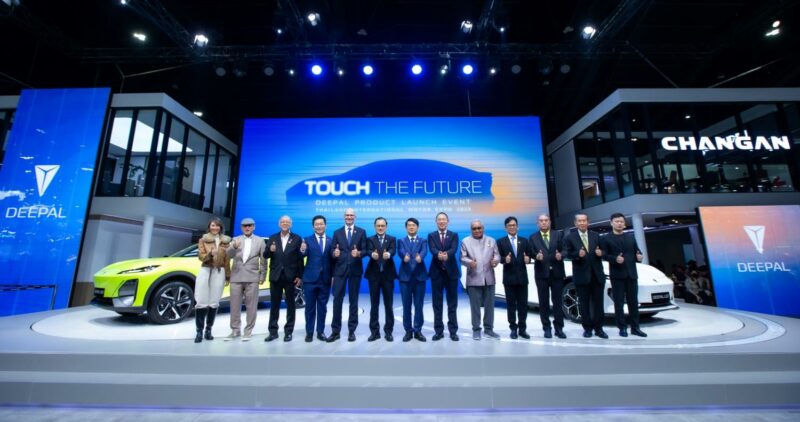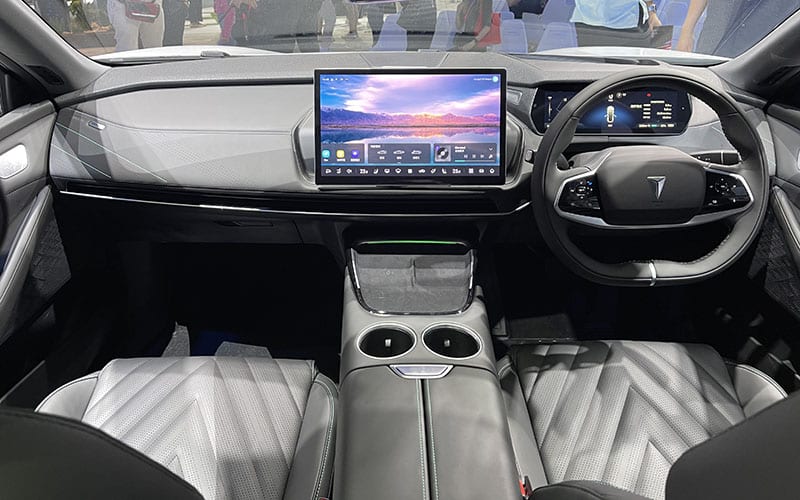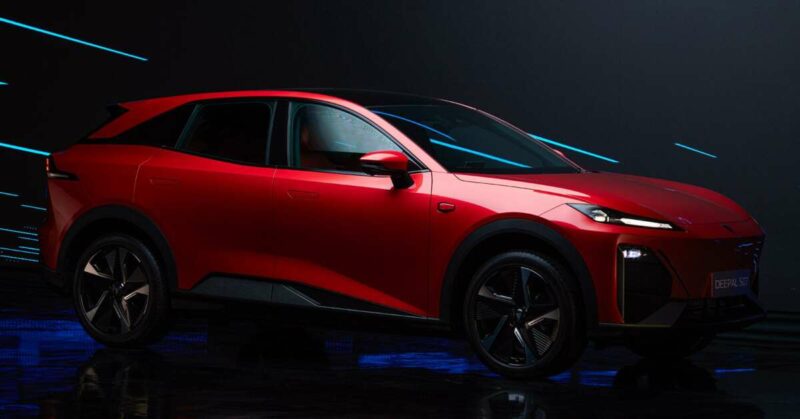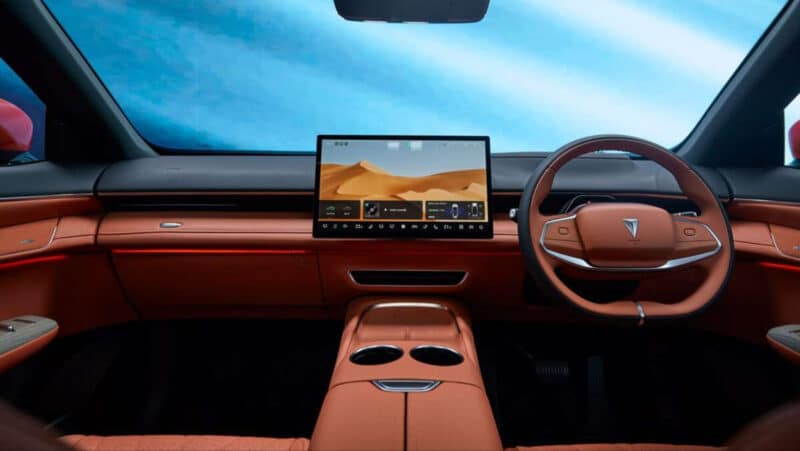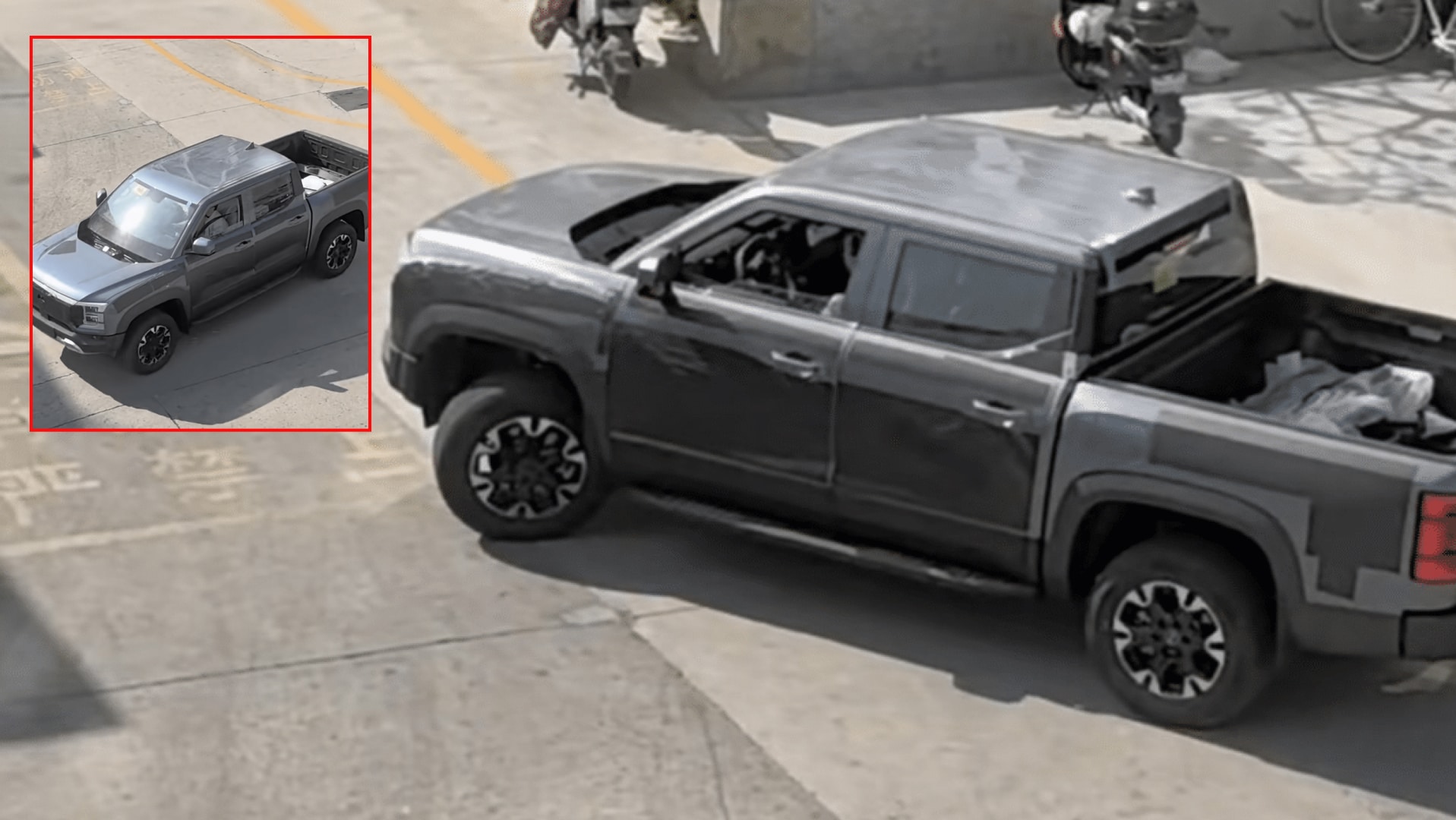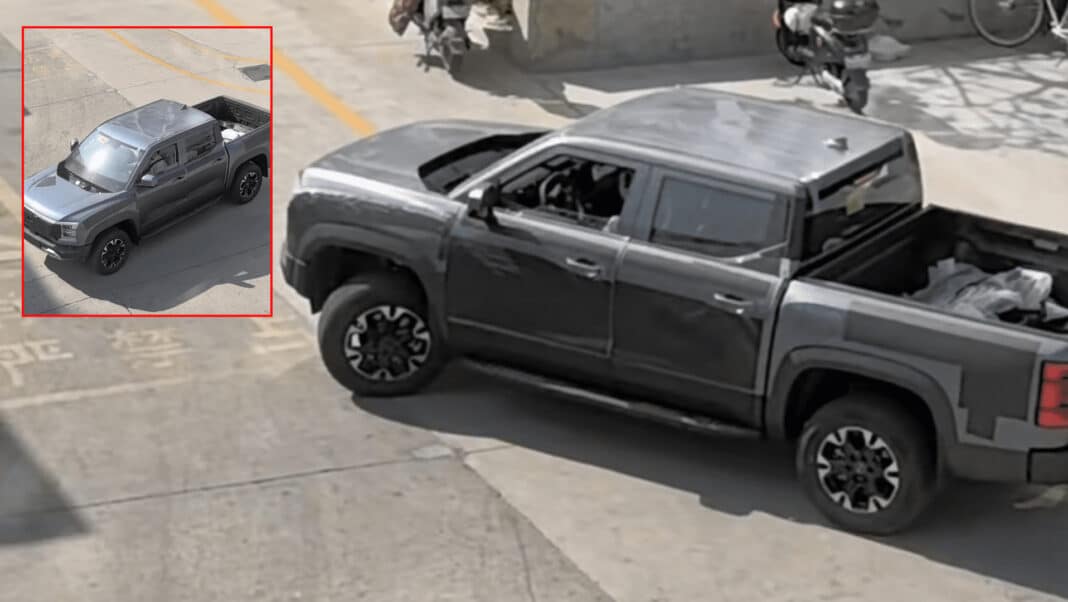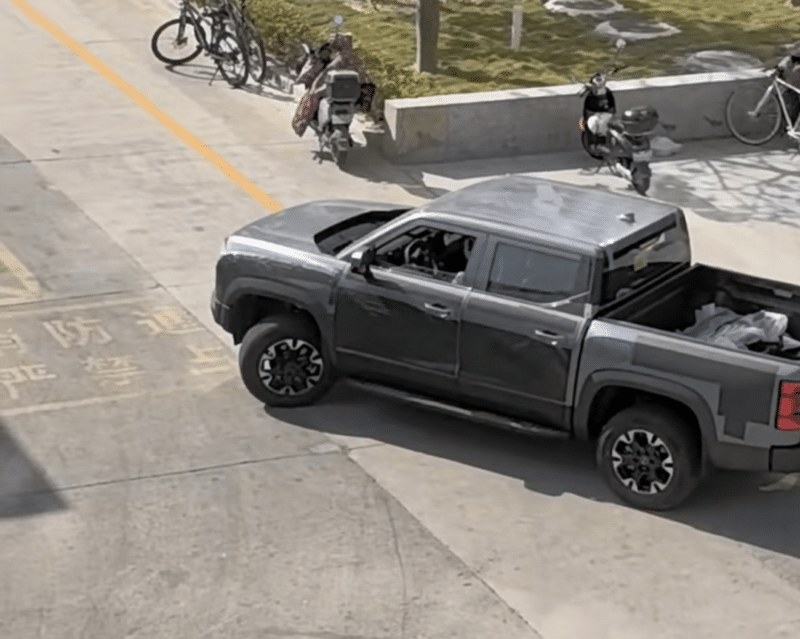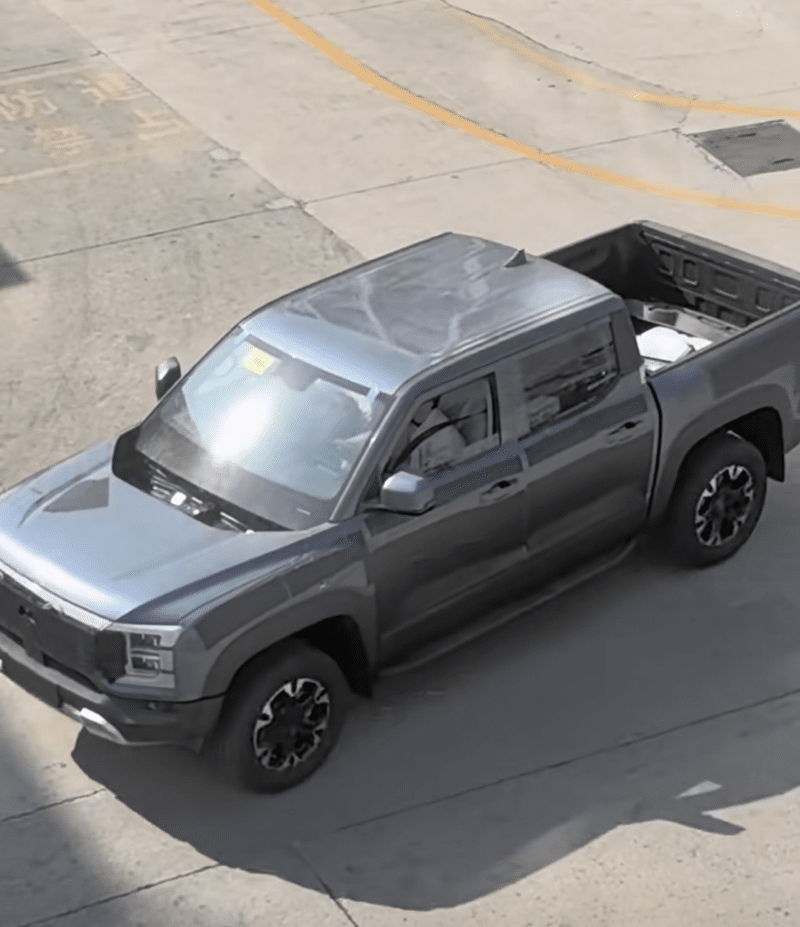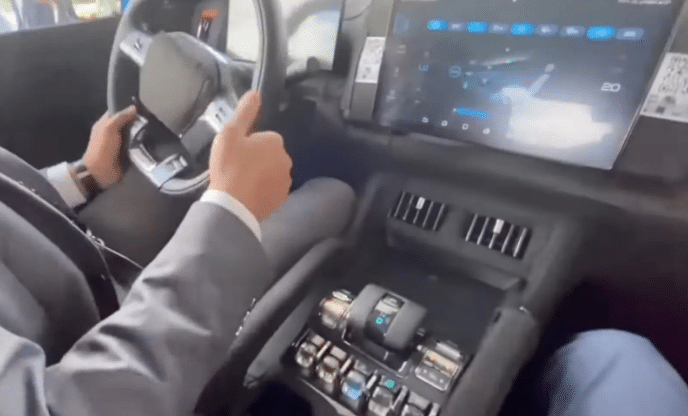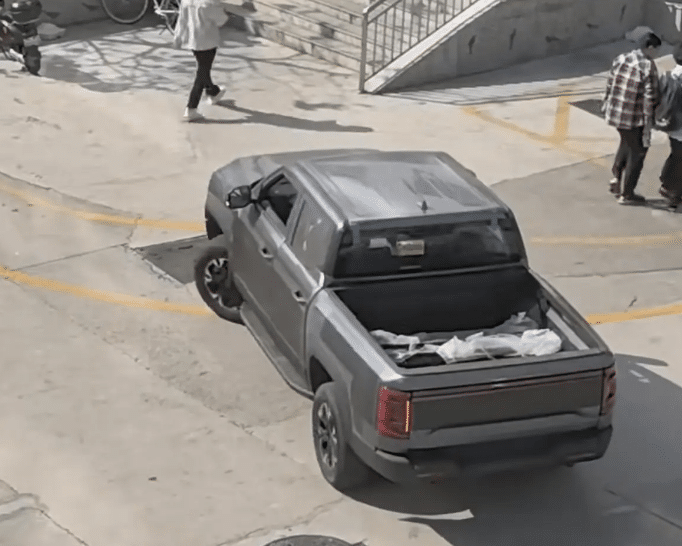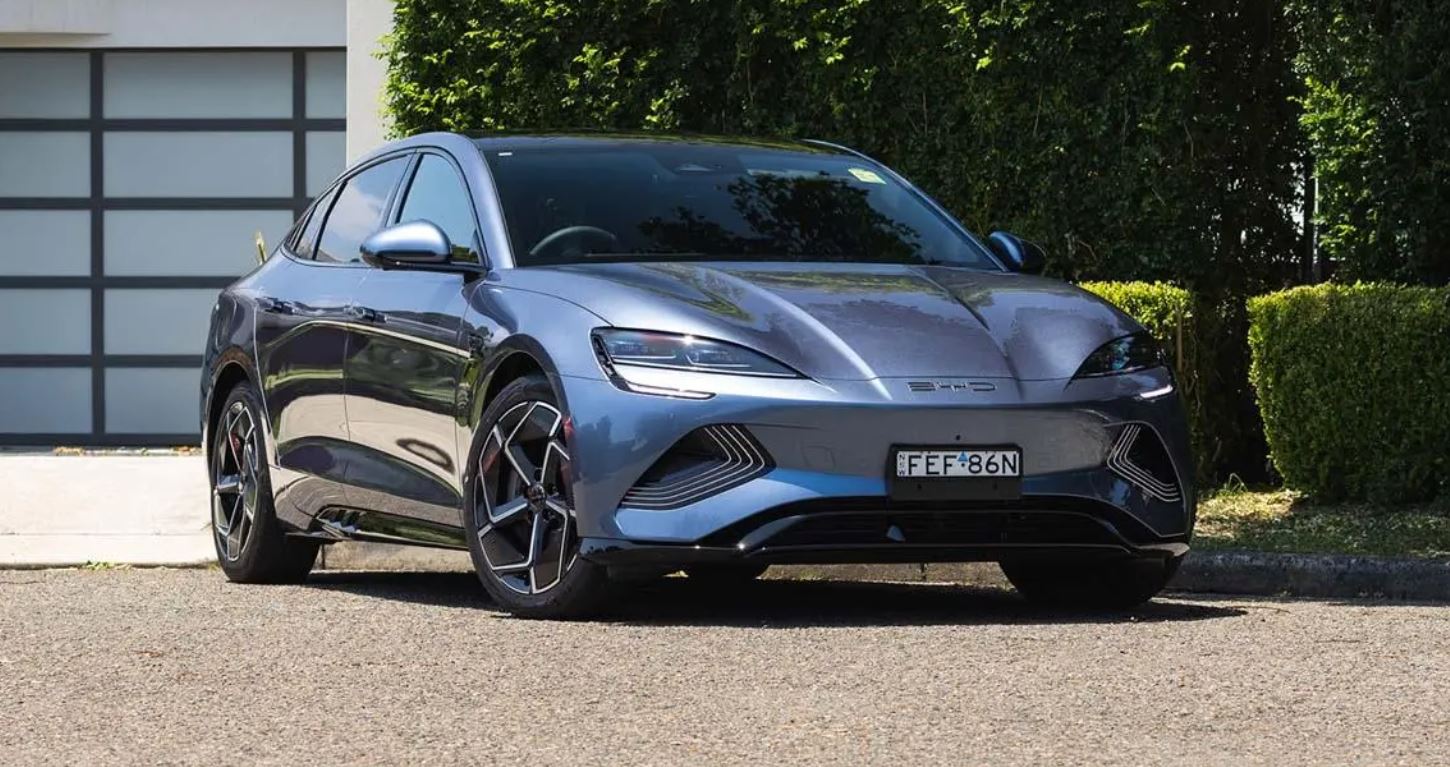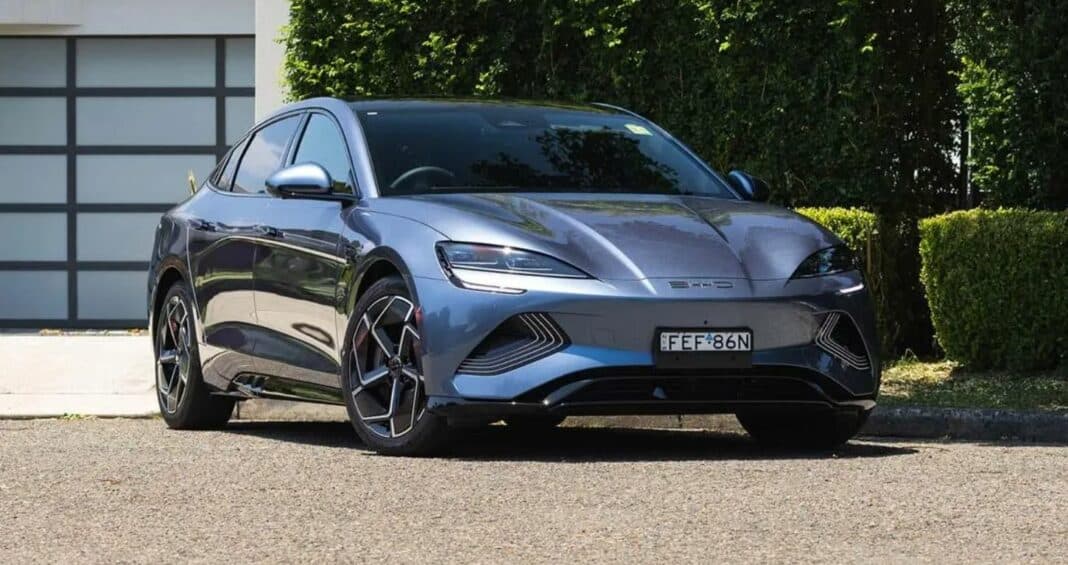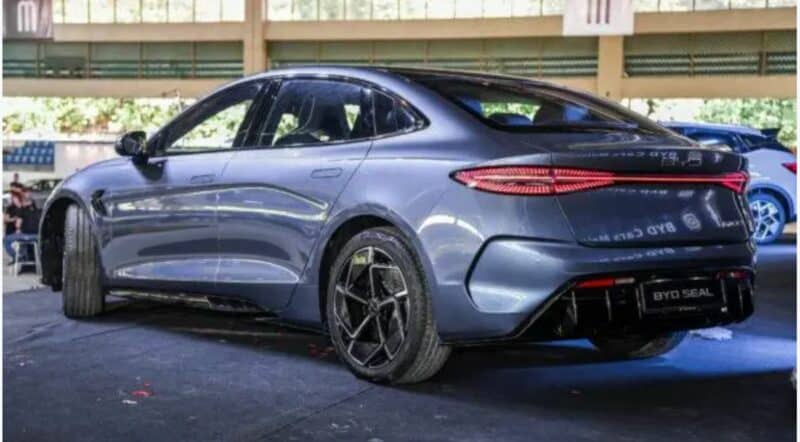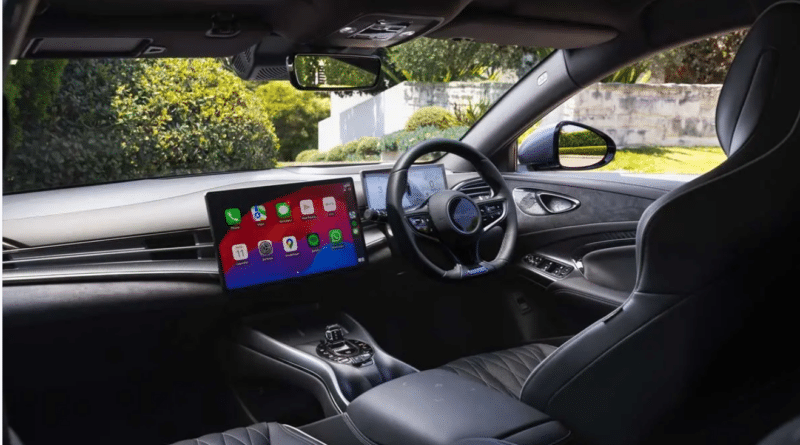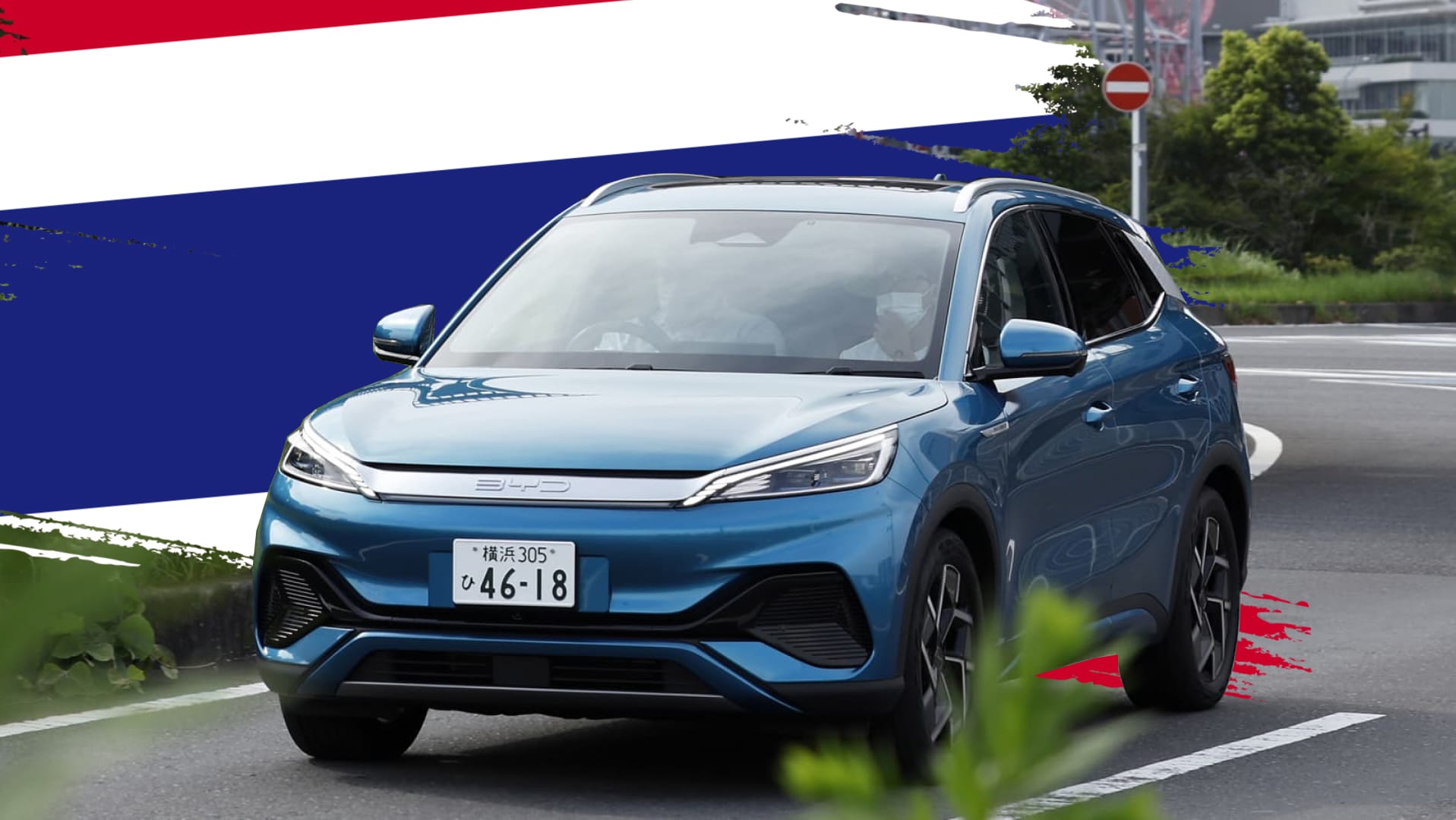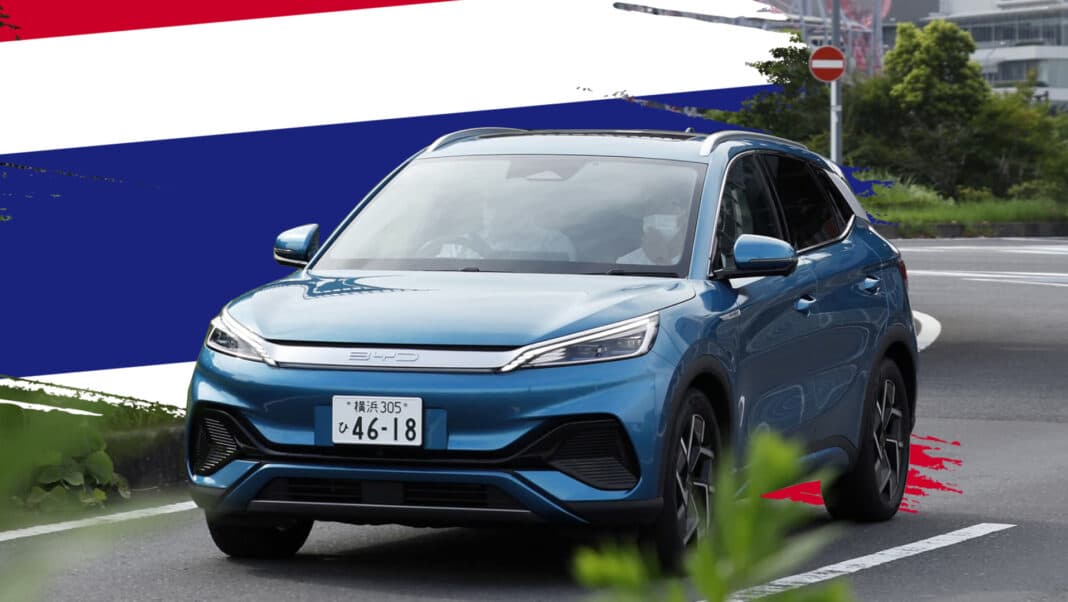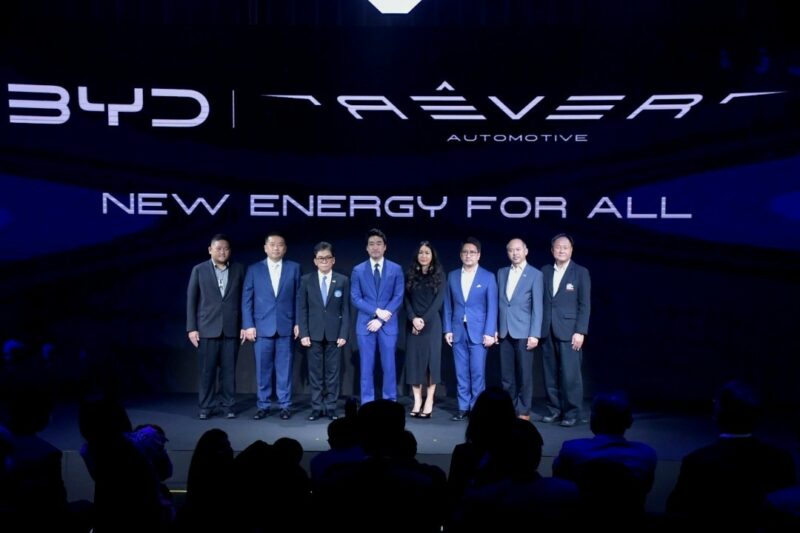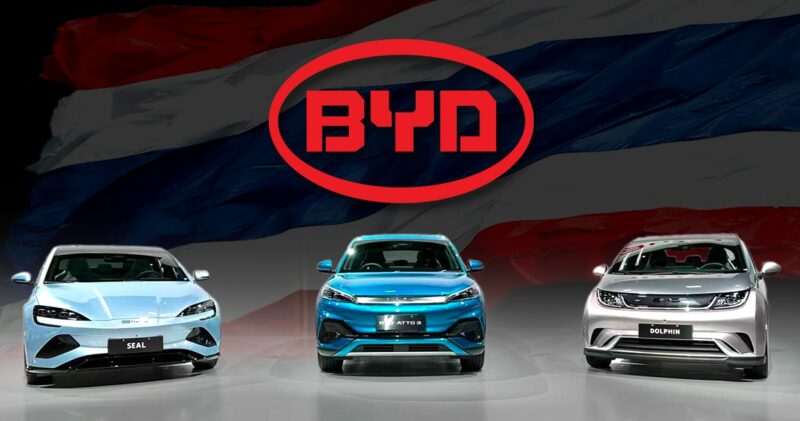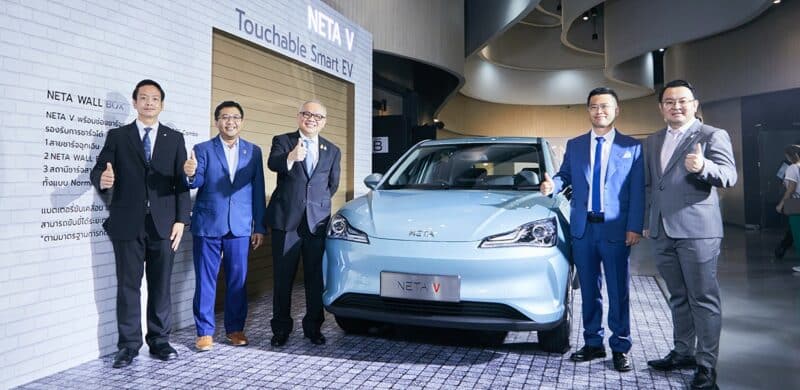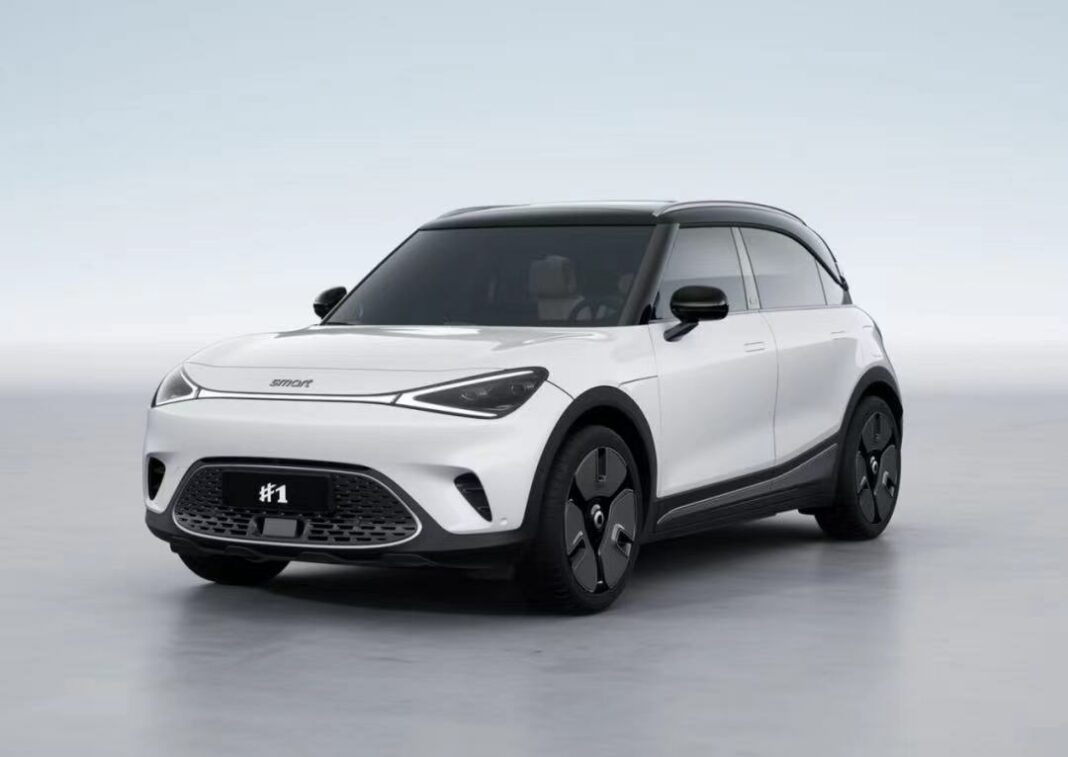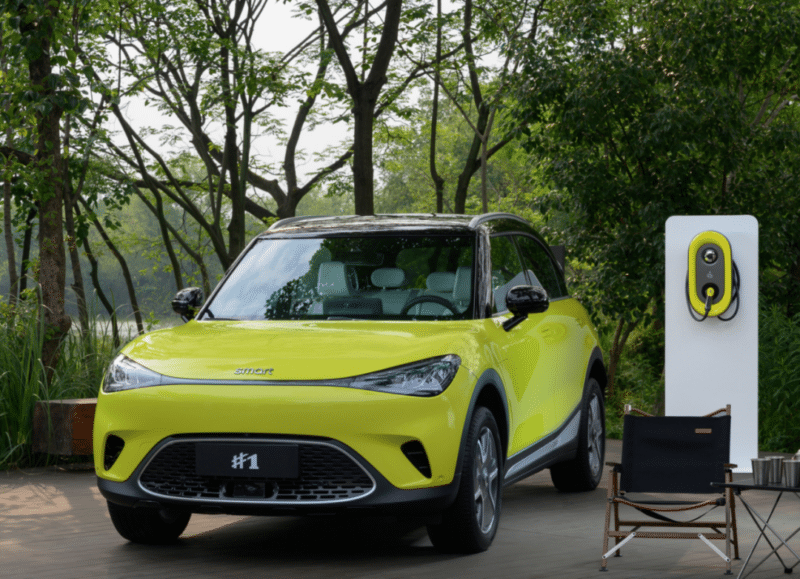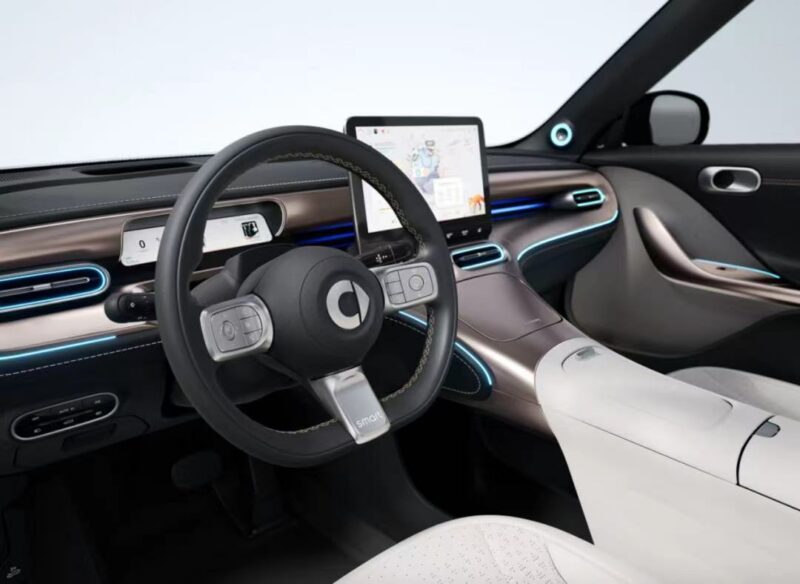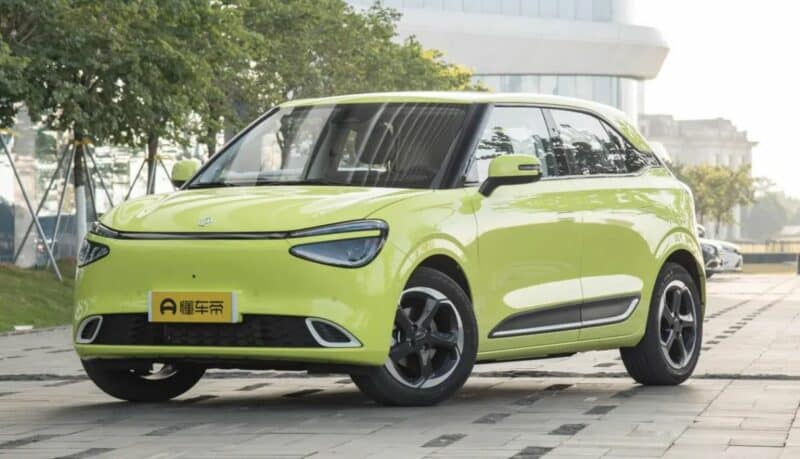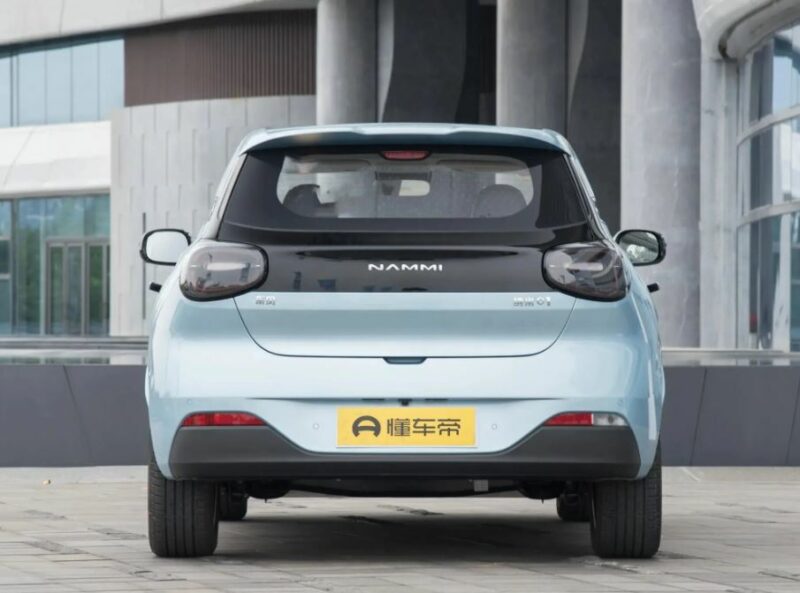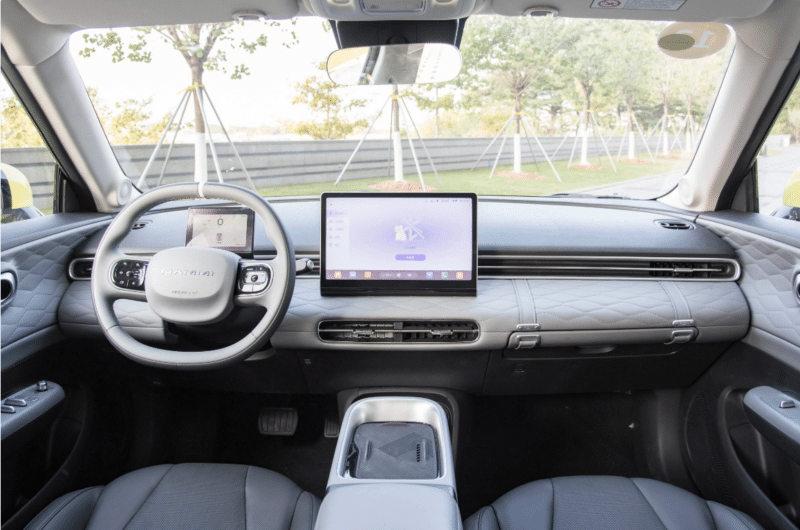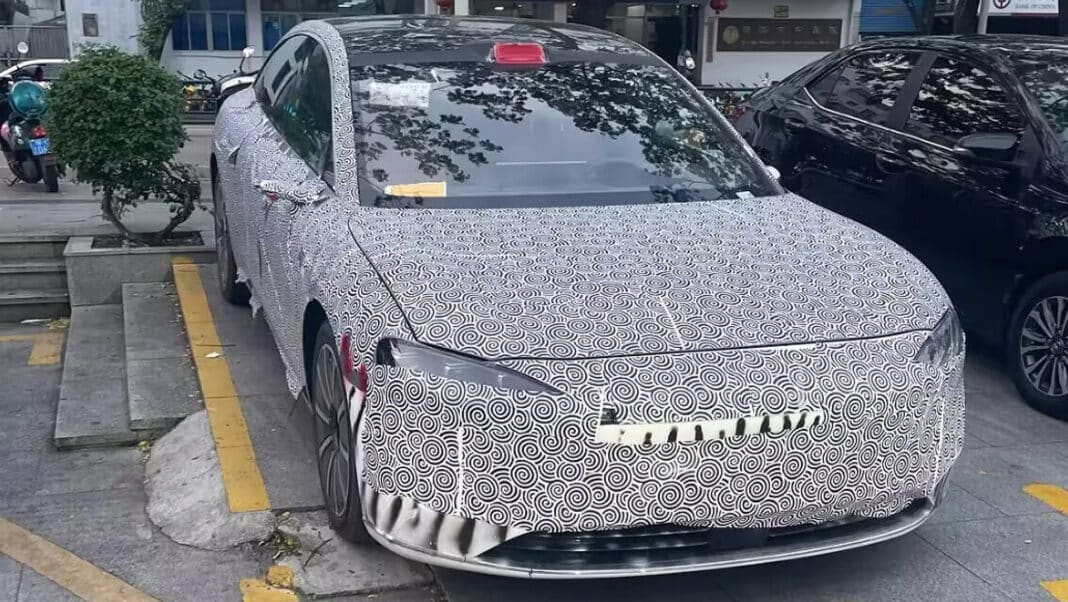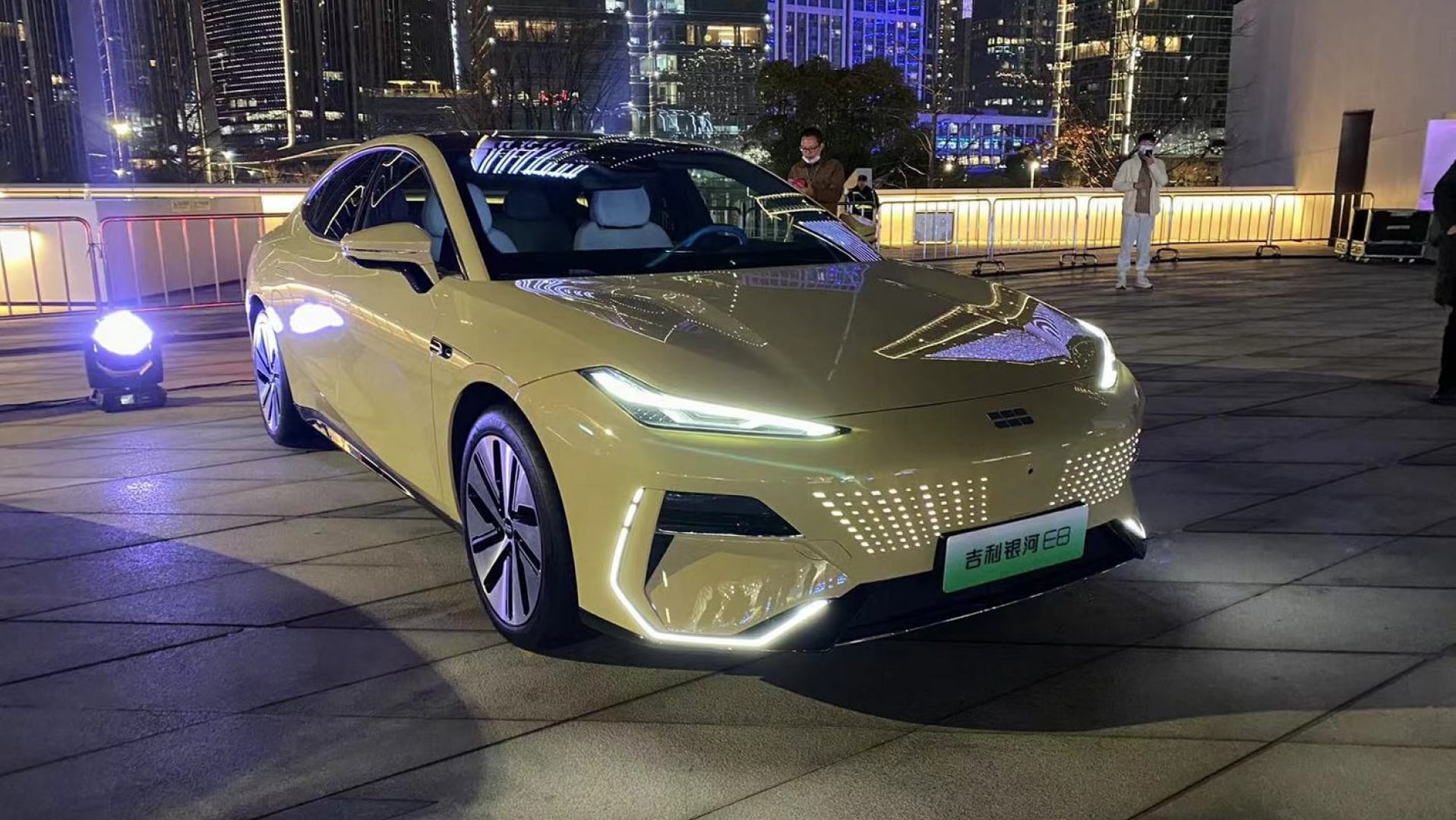Xiaomi answered 33/100 most frequently asked questions.

carnewschina.com
Xiaomi answers 100 questions about SU7 EV and its car-making business [Part 1]
Reading Time: 12 minutes
Jiri Opletal
January 8, 2024
0

News like this to your inbox or phone?
Weekly summary to your inbox
I want this
Never miss and important news
Get Instant notification once the news is published.
Follow Us
Xiaomi officially unveiled its first EV, Xiaomi SU7, on
December 28. It is a powerful all-wheel drive (AWD) sedan with a 495 kW output and 101 kWh battery good for the 800 km range. The acceleration 0-100 km/h is 2.78 seconds thanks to a pair of in-house developed V6 and V6s motors. It is contract manufactured by BAIC Off-road Vehicle Co. in Beijing.
Xiaomi is known as a company that gained success by selling high-end smartphones directly to customers with minimum margins. It offered its devices for half the price of flagships from Samsung and LG in the early 2010s, earning the loyalty of many fans. But the price of the SU7 wasn’t announced, resulting in various
rumors.
Today, Xiaomi announced it will answer the top 100 most frequently asked questions and published the first 33 with answers.
Some questions are obviously less from Xiaomi fans and more from the Xiaomi PR department, but some answers show information not known before. Here is the DeepL translation of the FAQ Xiaomi
posted. It is a long read, so if you are interested in some particular info, we suggest you use the ctrl-f function.
1. Many Xiaomi fans have reported that there have been fake rumors about Xiaomi cars recently. Is Xiaomi’s legal department really doing anything? When will the relevant progress be announced?
This time, we just held an automotive technology conference, and the popularity was so high that it exceeded our expectations. On the one hand, the huge popularity represents users’ expectations for Xiaomi cars, and we are really happy. On the one hand, much false information, rumors, and malicious smears are also pouring in. We will clarify it in a timely manner, and we will also resolutely pursue the legal responsibility of those who spread rumors and slanders.
2. What is the approximate price of Xiaomi Auto SU7? When will it be announced?
We don’t have the final pricing yret. Mr. Lei also said at the Xiaomi Auto Technology Conference that it is a bit expensive but will be “reasonably expensive.”
It won’t be 99,000, it won’t be 149,000, it won’t be 199,000. We will announce the final pricing at the official launch of Xiaomi SU7.
3. There is a lot of news online about the price of Xiaomi cars. Is it true?
The rumors about the price of Xiaomi cars on the Internet are all false news, and we have not determined the final price yet.
The final price will be announced when Xiaomi Motors is officially released.
4. Is the higher the pressure, the better for large die casting? Why is Xiaomi’s large die-casting size 9100t?
What we often talk about here is the clamping force of large die-casting. The clamping force is determined by the die-casting design. Xiaomi’s integrated large die-cast rear floor is larger and more complex in structure than the Tesla Model Y, so the rated clamping force of 9100t was finally selected. In actual use, the maximum value of Xiaomi’s super high pressure clamping force is 9500t, and the stable value can reach 9300t.
Clamping force is not the only indicator of large die-casting technology. The performance of heat-treatable alloy raw materials, die-casting island cluster design, defect detection, etc., are all core indicators for measuring large-scale die-casting technology. Xiaomi is currently the only car company in the world and the only one in China that has self-developed heat treatment-free alloy materials and self-developed large die-casting island clusters.
5. Someone on the Internet said that Xiaomi’s large die-casting machine was directly renamed from Haitian’s existing 8800t die-casting machine. Is this true?
of course not. Xiaomi super large die-casting 9100t (ton) is not a model, but the actual rated clamping force. The normal operation clamping force of Xiaomi’s super large die-casting cluster can be as high as 9500t. It is worth mentioning that Xiaomi and Haitian jointly developed Xiaomi’s super large die-casting 9100t die-casting machine. Based on the existing die-casting machine technology in the industry, Xiaomi’s R&D team has carried out 11 patented design innovations and improvements, most of which are Invention patents, such as AI active optimization injection parameter setting systems, etc. But the die-casting machine is only one link. Xiaomi has self-developed the die-casting cluster system, including 60 equipment and 433 process parameters. For a detailed introduction, please click this link: One article to learn about Xiaomi’s super large die-cast cluster
6. If it hits a large die-casting part, how much will Xiaomi’s maintenance cost be?
The rear of the Xiaomi SU7 adopts a three-stage design, and a buffer zone is designed based on the integrated large die-cast rear floor. Conventional collisions only require the replacement of the crumple zone, and the repair costs are the same as traditional designs. When encountering a very high-speed collision, the integrated large die-cast rear floor can provide better safety protection.
Generally speaking, Xiaomi SU7’s integrated large die-cast rear floor design is: small collisions are easy to repair with no pain, and large collisions are stronger to protect your safety. It is the best solution at present.
7. Is the yield rate of Xiaomi’s large die-casting products high? Will using large die-casting from the beginning cause quality problems?
Large die-casting technology is a typical long-term technology and is also the ticket for leading car companies in the future. Xiaomi Motors decided from the beginning to develop the entire stack in-house and invested in two sets of die-cast island clusters at one time. In order to ensure nothing goes wrong, we also added a set of traditional stamping plans, and three sets of plans were worked on simultaneously. Finally, Xiaomi’s super large die-casting project was successfully launched.
At the same time, our self-developed technologies related to the large die-casting island include temperature control systems, liquid aluminum transfer systems, injection systems, pouring systems, etc., and the self-developed AI defect detection system ensures the yield rate of the Xiaomi SU7 integrated large die-casting floor. .
8. What is Xiaomi Titan Alloy’s actual performance? Is self-developed alloy to save costs?
Xiaomi Titan Alloy is excellent in die-casting performance, mechanical properties, durability, recyclability, economy, etc. Xiaomi Titan Alloy also adds 40% recycled aluminum, which is environmentally friendly. Xiaomi has become the only one in China and the only one in the world that can be mass-produced. An automobile manufacturer that develops large die-casting materials in-house. As for why we had to self-research alloy materials then, I also said at the press conference that large-scale die-casting had extremely strict requirements on alloy raw materials. The supplier’s formula could not meet our requirements, so we could only self-research the materials. The cost of self-researched materials is definitely much higher than using a mature solution directly.
9. Is Xiaomi’s Titan alloy really self-developed?
Yes. Some netizens may have been misled by wrong information before. What they saw were related chat records of Professor Yang from a certain university. In fact, Professor Yang quickly clarified. I applaud Professor Yang’s spirit of seeking truth from facts and regret the misunderstanding caused by it. I hope everyone can help forward the clarification.
10. What is the difference in the specific formula of Xiaomi Titan Alloy?
The relevant patents have been published and can be checked, and we have also disclosed the proportions of the eleven elements used in the alloy. ( Patent number ZL 2023 1 0604165.9)
11. How many of Xiaomi’s super motor series are self-developed?
We have officially released a total of three motors and also disclosed a pre-research motor that has been experimentally implemented. Among them, Xiaomi Super Motor V6 and V6s were jointly developed with UMC and Inovance, respectively, with a rotation speed of 21,000 rpm. At the same time, Xiaomi has self-developed Xiaomi super motor V8s with a speed of 27,200 rpm. This information has also been publicly disclosed by Inovance on the A-share investor interactive platform. For an introduction to Xiaomi Super Motor, please click here for details: This is how the super heart of Xiaomi cars is made
12. Is Xiaomi Motor V6 an old product of UMC? Why are the model names the same?
Xiaomi Motor V6 is a new motor jointly developed by Xiaomi and UMC. Through the joint efforts of both parties, the stress topology of the motor rotor has been improved, the motor speed and power density have been greatly increased, and relevant patents have been obtained.
The so-called “Xiaomi Motor V6 is the 2020 UMC TZ220XS000 old model motor” is rumored on the Internet, which is purely a rumor. TZ220XS000 is only named according to national standard rules: TZ represents permanent magnet synchronous motor; 220 represents the outer diameter of the motor; X represents the resolver position sensor; S represents water cooling; 000 is the brand code of UMC. The same internal name does not mean that they are the same motor. This can be known from publicly available information in the industry.
13. Is mass production of the V8s motor confirmed?
V8s have achieved mass production and will be on the market in 2025. At present, automobile evaluation media have actually tested engineering vehicles equipped with V8s motors, and the actual measured speed of V8s can reach more than 30,000 rpm. However, the relevant test is a limit value test, and we still calibrate the rated speed of V8s to 27,200 rpm.
14. How does Xiaomi’s super motor achieve a speed of 35,000 rpm? It is the first time Xiaomi has made a motor that is more powerful than Tesla and others?
Behind the high speed of 35,000rpm, there are innovative efforts in structural design, material technology, and many other aspects. Among them, the most critical thing is that Xiaomi used “laser in-situ solidification carbon fiber winding technology” to carry out innovative designs of high-speed motor rotor sleeves and obtained relevant authorized rotor patents.
Compared with the wet winding method of carbon fiber, which requires brushing resin for curing after winding, Xiaomi’s laser in-situ curing winding process does not use carbon fiber raw filaments and resin glue but carbon fiber prepreg tapes, which are wound on the same work station equipment. The laser is used to solidify the carbon fiber prepreg tape. The process is simple and can be done at one station, and the tension is directly maintained during the winding process.
15. Is the CTB inverted battery the first in the industry?
Inversion of battery cells has happened before in the industry; inversion of pressure relief valves has also happened. However, the first two CTB cells that were inverted simultaneously were inverted as a whole, which had never happened before. This technical solution pioneered by Xiaomi is to ensure ultimate battery safety while also ensuring ultimate space utilization.
CTB stands for Cell to Body, which is the design capability of automobile manufacturers. It is not just the technology of battery manufacturers. The essence is that the battery pack and the body are integrated. The upper cover of the battery pack is directly on the floor of the passenger compartment. Xiaomi has 36 core patents. The CTB integrated upper cover, side wall design, bottom protection, composite fiber dragon spine, and other structural designs are all designed by Xiaomi. Low-conductivity coolants, battery management software, car cloud-integrated safety warning systems, high-voltage architecture, and so on are also designed by Xiaomi.
16. What specific benefits can Xiaomi’s CTB inversion technology solution bring?
Xiaomi CTB battery pack adopts an inverted battery cell design. Compared with the traditional upright battery cell, the pressure relief valve faces downward. With the only non-porous high-strength steel upper cover design in China and the world’s most stringent thermal runaway safety standards, This ensures that even under extreme conditions, the passenger compartment is completely isolated from the battery compartment in a safe state.
Even if thermal runaway occurs at 55 degrees Celsius, there is no open flame or heat spread. The pressure relief valve faces downward, and the non-porous upper cover forms the ceiling of the battery’s safety protection capabilities.
17. How high is the aerogel content of Xiaomi batteries? Is it standard?
Xiaomi SU7 adopts the industry’s top 17 layers of high-voltage insulation protection and customizes its strongest active cooling technology: the dual large-surface cooling area reaches 7.8m², the highest in its class. This amazing data is 4 times the industry average. At the same time, 165 pieces of the industry’s most advanced aerogel insulation material are laid on both sides of the battery core, which can withstand temperatures up to 1,000°C.
During the test, our engineers were extremely confident in the innovative materials and processes. They dared to put their hands close to the airgel material and directly bake it with a 1000°C spray gun flame on the other side, which was still unharmed.
18. Some netizens wonder whether the thermal management of Xiaomi SU7 can only reach -20 °C to adapt to low temperatures. Is this true?
Regarding the working scope of heat pumps, there are currently no strict regulations in the industry. Some companies claim that they can reach temperatures as low as -30°C. They are not pure “air source heat pumps” but have heaters or water source heat pumps at work.
It was revealed at the Xiaomi Auto Technology Conference that at -20°C, it relies on a pure air source heat pump and can still obtain heat from the air.
Suppose we follow the same caliber as mentioned by the relevant companies and add heaters, etc. In that case, the overall thermal management capabilities of Xiaomi cars can adapt to temperatures as low as -30°C or even lower. Therefore, Xiaomi Motors can challenge the “King of Winter Battery Range”, and it can be said that “Trams will no longer be afraid of the cold winter.”
19. Is Xiaomi Auto’s Modena platform completely self-developed?
Xiaomi Auto’s Modena platform is Xiaomi’s fully self-developed automotive platform. There were previous rumors that Xiaomi Auto uses other car manufacturers’ architecture, which is completely untrue.
At the beginning of the research and development of Xiaomi Auto’s Modena platform, 100 “first”, “only,” and “most” design goals were established. Xiaomi Auto also shared some results with everyone at the Xiaomi Auto Technology Conference. At the same time, there are more achievements that we will stay in Xiaomi. We will report to you in detail when the car is officially released.
20. It is said that the design goal is “the first, the only, and the most among 100 items”, but has it actually been achieved?
At the press conference, we talked about “design goals.” In fact, the vast majority have achieved it. Due to time constraints, we only talked about some of Xiaomi Auto’s leading technologies and features. We will introduce more points to you one after another until SU7 is officially released.
21. How can Xiaomi Auto’s intelligent driving achieve its goal of “entering the industry’s first camp by 2024”?
Xiaomi Auto’s intelligent driving adopts a full-link self-developed solution. Moreover, Xiaomi has a very high starting point. Based on the latest generation of underlying algorithms – BEV+Transformer+occupied network, it has fully integrated large model technology into it, achieving the first application of end-to-end perception decision-making large models in the world. On a production car.
22. What standard is the Xiaomi SU7’s Elk test result of 82km/h based on?
The Xiaomi SU7 Elk test was conducted entirely in accordance with the international standard ISO 3888-2, and the Elk test score was 82km/h. If you are careful, you will find that the road width in the middle section of the test is slightly narrower than the national standard, which makes it extra difficult for you. The Elk test is a comprehensive test that reflects a series of capabilities, such as handling and body stability. After the Xiaomi SU7 is officially launched, the media is also welcome to compare the actual test.
23. Will Xiaomi release a “beggar among beggars” version to lower the starting price?
Please rest assured that Xiaomi Auto has consistent product project approval guidelines, and “experience first” is always the top priority. Xiaomi SU7 is the standard version.
24. Is a five-star crash safety standard? Are there any differences in crash safety performance between the standard version and the MAX version?
No matter which version of the car it is, the safety crash test results are top-notch. We have chosen the most stringent standards to design our products. The Xiaomi SU7 series has reached the C-NCAP 2024 version five-star safety standard and the E-NCAP 2023 version five-star safety standard. Security standards and C-IASI 2023 version 3G+ are excellent security standards.
25. Are Xiaomi cars only available in three colors? Will the production version be available in white or black? Will there be any macho fans?
This time, we announced three colors of Xiaomi SU7, namely Gulf Blue, Olive Green, and Elegant Grey. All three colors are very beautiful on the actual car. Our design team has made great efforts in color research and development and car paint technology. effort.
We have also seen many users asking if there is a classic black-and-white color scheme. We have more colors to choose from, and we will fully introduce them to you when they are officially released.
26. Why didn’t Xiaomi Motors consider redesigning a new car logo?
We are very satisfied with Xiaomi Auto’s logo design internally. It is consistent with the Xiaomi brand logo and is an important brand asset. Aesthetics is relatively subjective; we will listen to everyone’s different voices with an open mind.
27. Why is the first car called Xiaomi SU7?
“SU” is the abbreviation of Speed Ultra, and “7” is the series positioning determined in accordance with the common domestic cognitive habits of model positioning. The model size is approximately the same as the BMW 5 Series. High performance is Xiaomi’s DNA. Tesla says it won’t build slow cars, and we do the same. As for how to pronounce it, we also discussed it carefully internally. In the end, everyone felt that it was better to call it “Su 7”, which is like calling a friend’s name and is more cordial.
28. Will the Xiaomi SU7 be sold globally?
At present, we will focus on the official domestic release and listing. But our ultimate goal is to have Xiaomi cars racing on every street worldwide.
29. Will Redmi cars be launched in the future?
There is no plan for this. We are still focusing on completing the entire production and sales chain of Xiaomi Motors, or even more specifically, our first car, Xiaomi SU7.
30. When can we see real Xiaomi cars in Xiaomi Home around us?
After Xiaomi SU7 is officially released, we will simultaneously provide you with real-car experience at Xiaomi Homes in key cities nationwide. We are actively preparing for this work, and please wait patiently for a while.
31. Have the main specifications of the Xiaomi SU7 been released?
Xiaomi Auto’s technology conference was held on December 28, 2023. This time, we only introduced the five core technologies of smart electric vehicles and gave a brief introduction to the products. We still have a lot of technology and product content that we haven’t developed yet. I will introduce it to you in detail at the official launch of Xiaomi SU7.
32. Mr. Lei said Xiaomi Motors has no rival within 500,000 yuan. Is he joking or serious?
This is what Mr. Lei said in reply to netizens in the comment area. Although it was a joke, he was also serious. At the press conference, we used the Porsche Taycan Turbo/Tesla Model S to make a number of comparisons, including design, performance, battery life, vehicle safety, etc. Everyone knows the actual comparison results, and everyone also knows the pricing of these two cars. It is clear that we are more pragmatic and will not set up those outrageous flags, so we are still very confident that Xiaomi SU7 currently has no rivals within the price of 500,000.
33. Will Mr. Lei focus on building cars later? Do you still have the energy to build a good mobile phone?
Mobile phones are still Xiaomi’s core business and the core foundation of our “Full Ecosystem for People, Cars and Homes” strategy. Mr. Lei still pays great attention to technology research and development in the mobile phone business. Mr. Lei said last year that at this stage, his time and energy allocation is roughly as follows: at least 1/4 of his time is still spent on mobile phone R&D business, 1/4 is focused on group operations and management, and 1/2 of his time is spent on the automotive business.


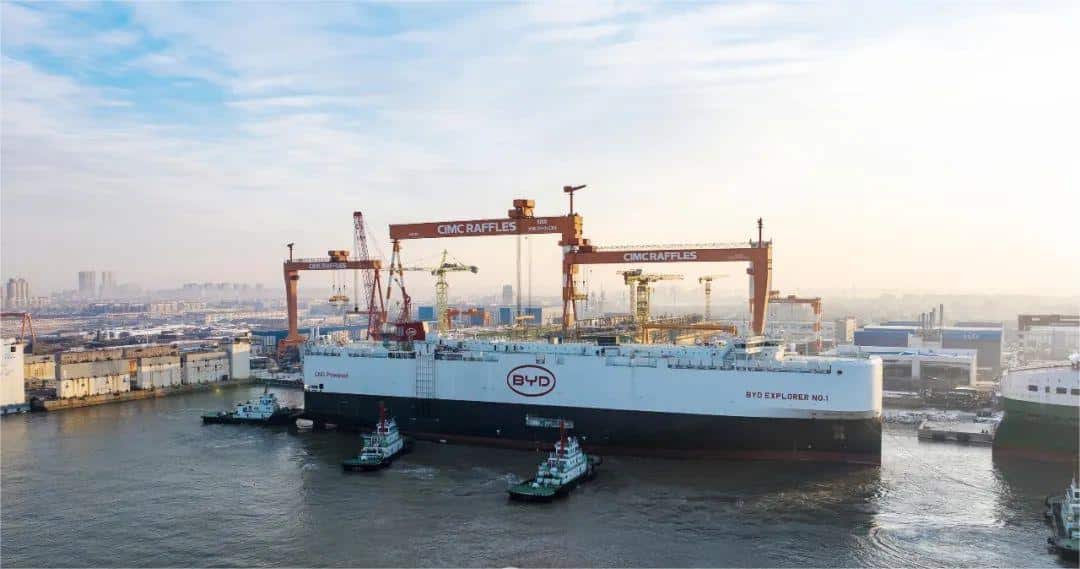
 carnewschina.com
carnewschina.com
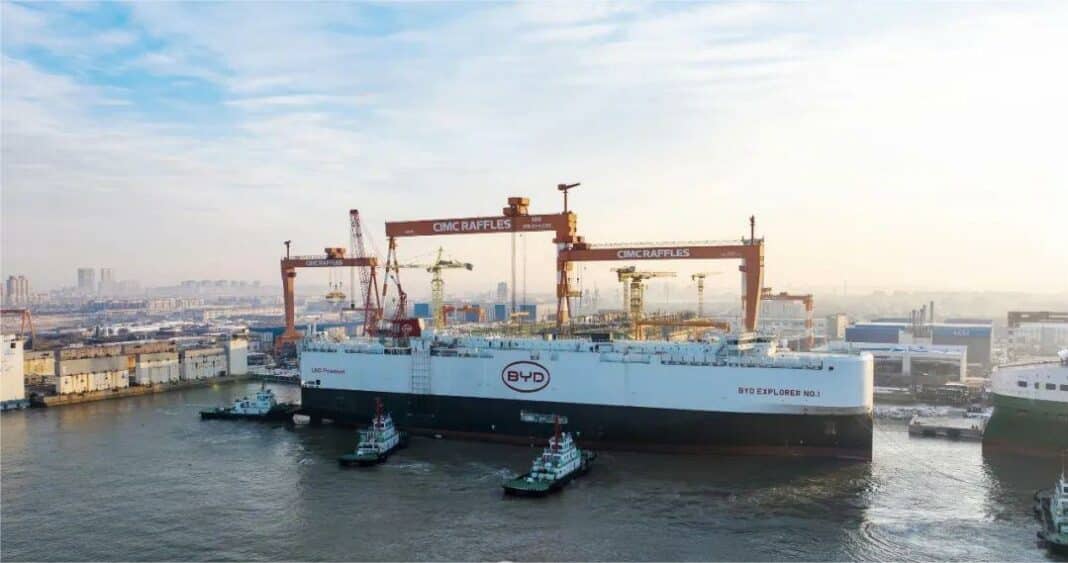
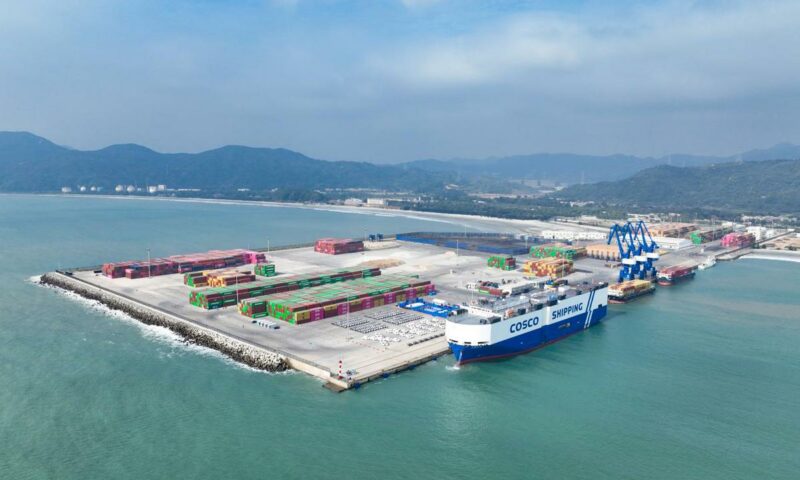 Xiaomo Port in Shenzhen, China
Xiaomo Port in Shenzhen, China
